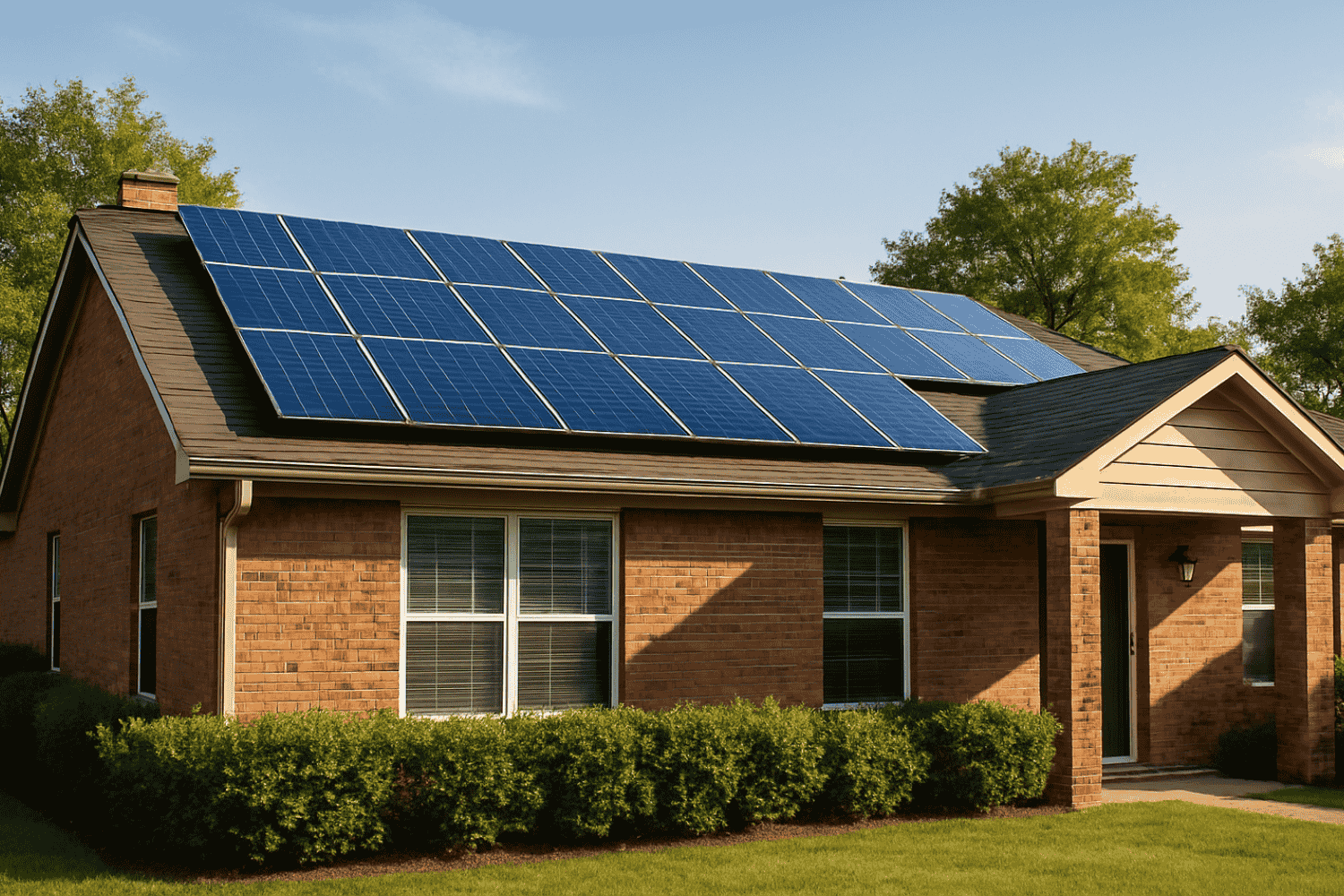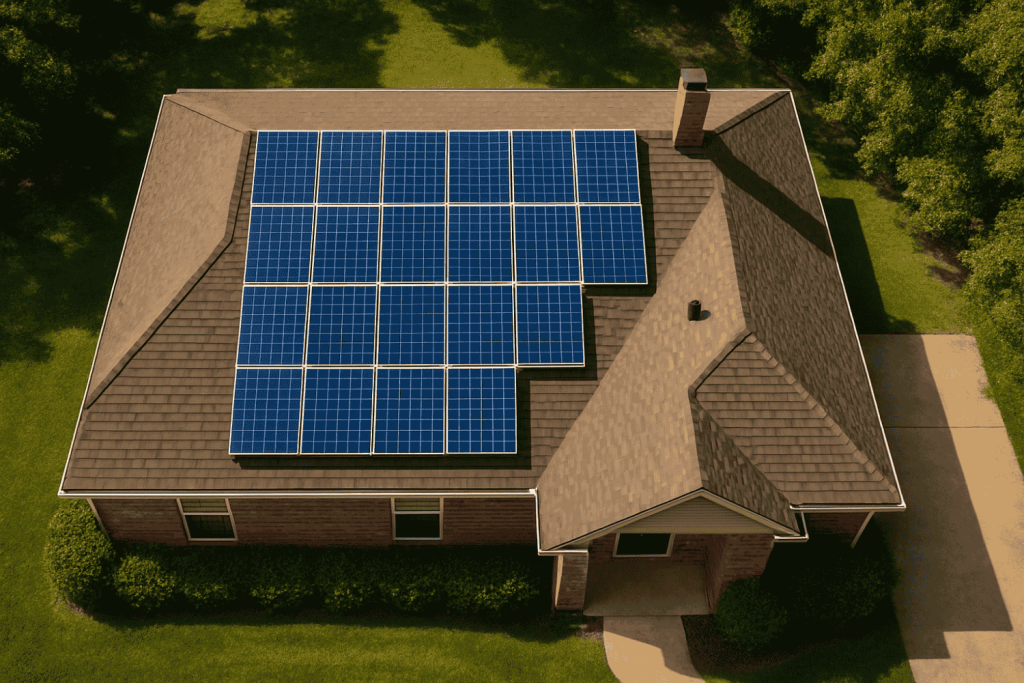
Here’s a number that might surprise you, the average U.S. Homeowner can save up to $52,000 over the lifetime of a solar panel system. That’s not a typo, and it’s one reason why more Americans than ever are asking, “Is solar worth it?”.
As we approach the end of 2025, this question becomes even more urgent, especially with energy prices climbing and the federal solar tax credit set to expire at the end of the year.
As a financial advisor, I’ve seen firsthand how solar can be a powerful long-term investment, but only when the numbers make sense for your specific situation. With installation costs, local incentives, and electricity rates varying dramatically, there’s no one-size-fits-all answer.
However, with the right approach, solar can offer not just energy savings but meaningful returns, environmental benefits, and even a bump in your home’s value.
In this article, we’ll break down everything you need to know to decide if solar is truly worth it for your home in 2025:
- Installation costs: What you’re really paying for, and how regional prices and system sizes affect the bottom line.
- Savings and ROI: How much you can expect to save each month and over the system’s lifetime, including typical payback periods.
- Incentives: The impact of the 30% federal tax credit and key state programs that can dramatically reduce your upfront costs.
- Pros and cons: A balanced look at the advantages and disadvantages of solar panels based on your home’s characteristics and plans.
- Timing: Why 2025 may be the most financially strategic year to go solar before incentives disappear.
You’ll soon have a clear framework to evaluate whether solar is a smart financial move for your household and your pocketbook.
The True Cost of Going Solar in 2025
What You’re Really Paying For
The average residential solar system in the U.S. costs between $10,000 and $30,000 before incentives. That wide range depends on the size of the system, the complexity of the installation, and whether you include battery storage or other upgrades.
A typical 12 kW system, suitable for homes with above-average energy use, costs around $30,000 before incentives, and drops to about $20,000 after applying the 30% federal solar tax credit.
Here’s a breakdown of what those costs typically include:
- Solar panels (modules): Roughly 12% of the overall system cost
- Inverters: Convert DC electricity from the panels into AC for home use
- Mounting and racking systems: Secure panels to roof or ground mounts
- Permitting and inspection fees: Ensure compliance with local codes
- Labor and installation: Skilled labor to ensure proper setup
- Optional battery storage: Adds $10,000+, but provides energy independence
Regional Price Differences
Costs vary widely across states. In warmer states like Arizona or Texas, per-watt costs are lower, but higher cooling needs can require larger systems.
In states like New York or Massachusetts, installation costs are higher, but incentives and lower average electricity usage can offset this.
Key cost factors:
- Sunlight availability (solar irradiance)
- Local labor and permitting costs
- State-level incentives
- Electricity rates and utility policies
Federal and State Incentives
The 30% federal solar investment tax credit (ITC) allows you to deduct 30% of installation costs from your federal taxes, but it’s set to phase out for residential systems after December 31, 2025.
State examples:
- New York: NY-Sun program and other incentives can offset up to 75% of costs
- California & Massachusetts: Net metering, property tax exemptions, low-income programs
- Other States: Sales tax waivers, rebates, and financing programs
Savings and Payback: When Does Solar Pay Off?

Monthly and Long-Term Savings
A 5 kW system can cut your bill by $100–$150 per month ($1,200–$1,800 per year). Over 25–30 years, savings can reach $34,000–$120,000.
Savings depend on:
- Local electricity rates
- Sunlight availability
- System size and efficiency
- Net metering policies
ROI and Payback Period
Most homeowners see ROI in 5–10 years. After that, the rest of the panel lifespan, which is often 15–20 more years, is pure savings.
Shorter payback:
- High local energy prices
- Strong incentives
- Large system covering most energy use
Longer payback:
- Low rates
- Shading or poor roof orientation
- Moving soon after installation
Net Metering
Net metering lets you send excess energy to the grid for credits.
Types:
- Full retail: Credit matches your electricity rate (best)
- Reduced rate: Credit at lower wholesale rate
- No net metering: Some states have removed it, lowering ROI
Advantages and Disadvantages of Solar Panels
Benefits
- Energy independence: Avoid rising rates and peak pricing
- Environmental impact: Reduce 3–4 tons CO₂/year (like planting 100 trees)
- Home value: +4–6% on average (~$15,000)
- Long-term reliability: 25-year warranties, 85%+ efficiency after 20 years
- Low maintenance: Minimal upkeep required
Drawbacks
- Roof may not be suitable
- Not ideal if moving soon
- Incentives vary and may phase out
- May not fully offset all energy use
Is It Worth Getting Solar Panels for Your Home?
Key Questions
- Does your roof get good sunlight year-round?
- Is your roof in good condition?
- Are local electricity rates high?
- What incentives are available in your area?
- Will you stay long enough to break even?
How To Calculate ROI
- Check your average monthly kWh usage
- Find your local cost per kWh
- Estimate system size
- Get a quote, including roof work if needed
- Apply incentives
- Estimate monthly bill savings
- Divide net cost by annual savings for payback period
- Factor in resale value and environmental benefits
The Future of Solar: Why Timing Matters
Expiration of 30% Tax Credit
The ITC ends for residential after Dec. 31, 2025. Waiting could mean paying thousands more.
Growing Demand & Tech Improvements
DOE projects solar could supply 45% of U.S. electricity by 2050. Expect better efficiency, lower costs, and improved battery storage.
Final Thoughts
Solar in 2025 offers a rare combination of high incentives, solutions for rising electricity costs, and proven long-term returns. For many, that means $50,000+ lifetime savings with a payback in 5–10 years.
The right choice depends on your location, energy costs, roof condition, and how long you’ll stay in your home. While I generally recommend going solar if you can, run the numbers for yourself before deciding.
References: